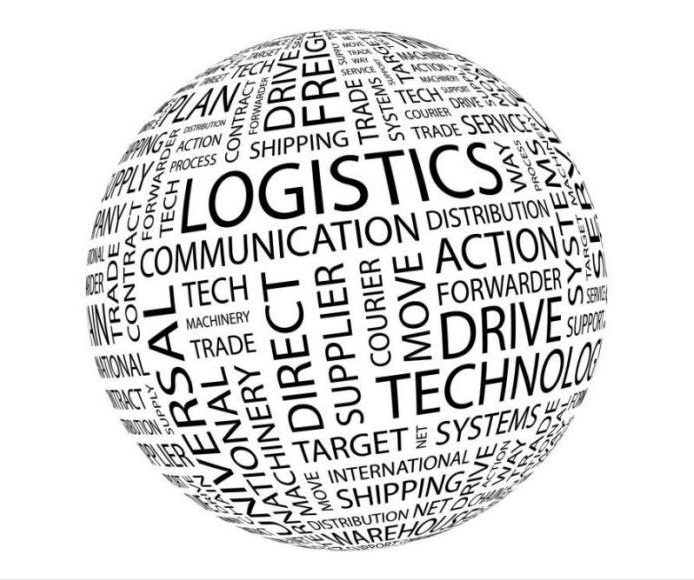Home / Industry Insights / Fine Chemcial
LOGICUS helps you achieve compliant and efficient building material imports
Extensive experience in stone, glass, wood, and coatings ensures accurate HS classification. Regulatory needs such as CIQ inspection, CCC certification, or eco-testing are anticipated to minimize risks.
Covering document review, inspection coordination, and clearance certificates, including radiation tests, fumigation, and VOC compliance, to secure smooth and timely customs clearance.
With strong presence at key ports like Shanghai, Shenzhen, Guangzhou, and Tianjin, services provide fast response, transparent costs, and real-time updates for efficient imports.
Fine chemicals include coatings, adhesives, catalysts, and electronic chemicals with high added value. Many are regulated as hazardous chemicals or subject to environmental and licensing controls in China. Successful import requires precise HS Code classification, hazardous chemical registration, CIQ inspection, and environmental compliance. At LOGICUS, we focus on accurate classification, complete documentation, and risk management to ensure smooth and compliant entry into the Chinese market.
Hazardous chemicals include flammable, explosive, toxic, and harmful substances. In China, imports must comply with the Hazardous Chemicals Catalogue, requiring registration, import licenses, SDS, GHS labels, and HS Code classification. LOGICUS ensures early filing and compliant operations for safe and efficient clearance.
Hazardous chemicals include flammable, explosive, toxic, corrosive, and environmentally harmful substances.
The “Catalogue of Hazardous Chemicals” and relevant laws under the Ministry of Emergency Management.
Globally Harmonized System labeling for chemicals with hazard pictograms and safety phrases.
No, SDS must be in Chinese.


Chemicals used in IT refer to high-purity fine chemicals applied in semiconductor, flat panel display, and data storage manufacturing, such as photoresists, developers, etchants, CMP slurries, liquid crystal monomers, and OLED materials. These chemicals often require electronic-grade purity with strict impurity control. When importing into China, attention must be paid to HS Code classification, hazardous chemical catalog, environmental filing, and customs compliance to ensure safe and legal market entry.
They are electronic-grade chemicals used in semiconductors, LCD/OLED displays, and data storage manufacturing.
Yes. Many are classified under 38180000, while others fall under Chapters 28, 29, 32, and 38.
Not all. Some are non-hazardous, but many (e.g., HF, strong acids) fall under the Hazardous Chemicals Catalogue.
Yes, packaging must carry Chinese GHS-compliant labels.
Coatings, dyes, and pigments are typical fine chemicals widely used in textiles, plastics, construction, automotive, and electronics. When importing into China, key requirements include HS Code classification, hazardous chemical catalog checks, environmental filing, and CIQ inspection. Some products are flammable or toxic, requiring hazmat registration and Chinese GHS labels to ensure compliant market entry.
Yes, to avoid clearance delays.
Yes, they are typical fine chemicals widely used in textiles, plastics, and construction.
Examples: Disperse dyes – 32041100, Pigments – 32061900.
Only special coatings used in regulated products (e.g., automotive) may involve CCC indirectly.

Global Trade Management goes beyond customs compliance,
offering trade agency services with switch bills,
documentation support, and market strategies
helping businesses enter and
expand in China with minimal
cost and maximum efficiency.
Customs Brokerage covers China import and export clearance, ensuring full compliance with customs regulations and supervisory conditions—helping businesses achieve efficient clearance and
cost-effective market expansion.
Warehousing includes bonded zone
services in China, with labeling, sorting,
and re-export options—helping businesses achieve flexible distribution and transshipment to third countries at minimal cost.
International freight spans sea, air, and multimodal transport, with end-to-end visibility—enabling businesses to achieve cost-efficient, reliable, and seamless global logistics.

Adhesives are widely used in construction, automotive, packaging, electronics, and furniture, including epoxy, acrylic, silicone, and hot-melt glues. Some contain flammable solvents or toxic substances, making them subject to the Hazardous Chemicals Catalogue. For import into China, key requirements include HS Code classification, hazmat registration, Chinese GHS labels, and SDS compliance. Depending on usage, adhesives may also face additional inspection and environmental filing requirements.
Yes, many are under statutory inspection.
Mainly under HS 3506, with specific sub-codes for epoxy, acrylic, and silicone adhesives.
Some are, especially solvent-based or flammable adhesives.
Yes, a Chinese SDS compliant with GHS is mandatory.
Wood materials include solid wood flooring, engineered flooring, veneer panels, plywood, and furniture components. Valued for their natural texture and warmth, they are commonly used in interiors. Solid wood products may require phytosanitary certificates or fumigation, while engineered wood may qualify for exemption with a deep processing declaration. Formaldehyde emission compliance is also key.
Natural wood and certain products fall under plant quarantine regulations. Solid wood items may require fumigation certificates or phytosanitary certificates, while engineered wood may be exempt if supported by a deep processing declaration.
Logs, sawn timber → HS 4403 / 4407
Plywood, MDF, particle board → HS 4412 / 4411 / 4410
Wood flooring → HS 4418
Wooden furniture parts → HS 9403
Classification affects tariff, inspection, and quarantine requirements.
Yes.
Most wood products are under Regulatory Code P (CIQ inspection).
Logs and wooden packaging require fumigation or IPPC treatment.
Interior products may require formaldehyde emission testing.
Solid wood: Must provide fumigation or phytosanitary certificates.
Engineered wood: Deep processing declaration may exempt quarantine.
Furniture parts: Require composition statements and eco-compliance reports.
The clearance process focuses on inspection + quarantine.


Polymer materials include plastics, rubbers, resins, and modified products, widely used in automotive, electronics, appliances, packaging, and construction. Some polymers require flame-retardant, conductive, or eco-friendly properties, thus subject to RoHS, REACH, or environmental filing requirements. When importing into China, attention must be paid to HS Code classification, hazardous chemical checks, environmental or energy regulations, and CIQ inspection to ensure compliance.
Plastics and resins are mainly under Chapter 39; rubbers under Chapter 40.
Most are not, but flame-retardant or solvent-containing types may be listed.
Yes, a Chinese SDS is needed if classified as chemicals.
Not directly, but if used in CCC products (e.g., cables, appliances), they may indirectly affect CCC compliance.
title of show case 1
Duties, licenses, permits, and all other brokerage
requirements are handled expertly for optimal
clearance.(内容简介3行)
title of show case 2
Duties, licenses, permits, and all other brokerage
requirements are handled expertly for optimal
clearance.(内容简介3行)
title of show case 3
Duties, licenses, permits, and all other brokerage
requirements are handled expertly for optimal
clearance.(内容简介3行)

From regulations to real-world case studies,uilt for importers, exporters, and compliance teams — explore insights that help you navigate the complexity of global trade.






No. Only paints that are flammable, corrosive, toxic, or reactive are regulated as dangerous goods.
Solvent-based paints like epoxy or PU coatings often are.
Water-based interior paints and latex coatings usually are not.
Generally no. Most paints—including architectural coatings, floor coatings, wood finishes, and anti-corrosion paints—do not fall under China’s CCC mandatory certification list.
Paint may be indirectly affected in the following cases:
1)It’s applied to a CCC-regulated finished product (e.g., home appliances)
2)It forms part of a fire protection system (e.g., fire-rated doors, intumescent coatings)
3)It’s used on automotive parts under CCC oversight
4)It’s intended for indoor air-sensitive environments, requiring VOC reports or eco-labels
1)SDS (Safety Data Sheet)
2)DG classification report (if applicable)
3)VOC emission test (for interior coatings)
4)Label templates with GHS compliance
5)CCC is usually not required, unless paint is part of a regulated system
Engineered flooring is typically exempt when it:
Is composed of HDF or plywood cores
Has undergone heat press, lamination, surface coating
Is declared as a finished decorative product
Comes with a Declaration of Deep Processing
Use of untreated wood pallets or packaging
Product appears raw or unfinished
Lack of processing description in the customs declaration
Missing or insufficient deep-processing documentation
It’s a formal letter from the supplier confirming the product has been deeply processed and poses no phytosanitary risk.
While not mandatory, it’s highly recommended for smooth clearance.
Track air cargo for 231 airlines here